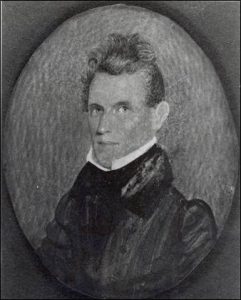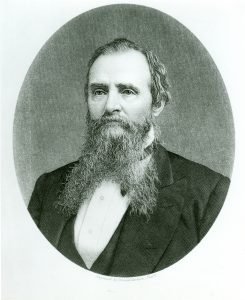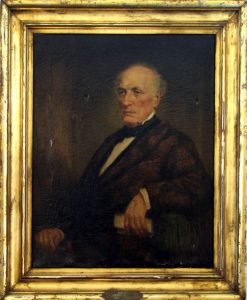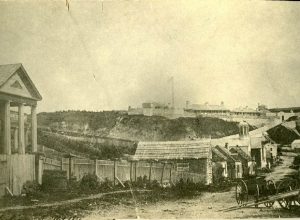
Congressman, Newspaper editor, Attorney General of Tennessee
During the summer of 1862, Mackinac Island became the home to three men from Tennessee who refused to swear allegiance to the Union. In April, military Governor Andrew Johnson had the three men arrested for their support of the Confederacy and “treasonous inclinations.” Johnson felt that the wealthy, planter class of the South was part of the reason for the war and he wanted the three men removed from Tennessee. Secretary of War Edwin Stanton ordered the three men sent to Detroit until a decision could be made regarding their incarceration.

Planter, Horse Breeder, Adjutant General of the Tennessee Militia
The war was not going well for the Union at this time and troops were needed to fight, leaving a lack of men to act as guards. Stanton, however, was able to secure the services of Captain Grover S. Wormer who went to work recruiting a company of men. By May, around ninety Michigan men had enlisted in what became known as the “Stanton Guard.” The decision was made to send the three prisoners to Fort Mackinac on Mackinac Island in northern Lake Huron. On May 10, 1862, Wormer and his company along with the three prisoners boarded the steamer Illinois for the island.

Judge, Legislator, Railroad Founder
The three men were Judge Josephus Conn Guild, Washington Barrow and William G. Harding, all from the Nashville area. Judge Guild was originally from Virginia, had served in the Tennessee legislature and was a founder of the Louisville and Nashville Railroad. Washington Barrow was a lawyer who served as a congressman and attorney general in Tennessee. He signed the Tennessee secession ordinance and helped finance a Confederate cavalry company. William G. Harding owned the 3,500 acre plantation Belle Meade where he raised thoroughbred race horses. He served as adjutant general of the Tennessee militia. All three men were never formally charged with a crime and were considered political or state prisoners.
Upon arrival, the Officer’s Wood Quarters where the prisoners were to be housed was not ready and so the Mission House Hotel was used. The quarters were soon ready and once inside the fort, the prisoners were able to walk the fort grounds on their own, being confined to their quarters at night. They were allowed to walk downtown under guard but were not allowed to interact with anyone. They could receive mail and would dine with Captain Wormer on occasion. The summer passed by with little incident and by August, Harding and Guild took the oath and returned to Tennessee. Barrow was transferred to Johnson’s Island Military prison in Lake Erie. He was eventually exchanged and upon returning to Tennessee, made an unsuccessful run for Confederate governor. The Stanton Guard was mustered out in September with many of the men joining other Michigan regiments.










